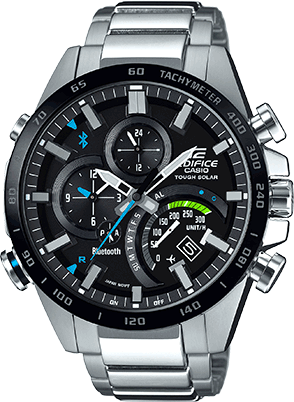Casio 01 501

Product Title Casio casio #10297191 genuine factory replacement band g shock model: g9200, gw9200 (black) Average Rating: ( 0.0 ) out of 5 stars Current Price $28.01 $ 28. Casio keyboards are simple to use and usually have helpful features like audio recording and various instrument settings. To use your Casio, press the power button to turn it on and adjust the volume using the nobs to the left or right. You can also change the sound you play by using the number keypad.
CASIO COMPUTER CO., LTD. 6-2, Hon-machi 1-chome Shibuya-ku, Tokyo 151-8543, Japan Printed in Japan Thank you for purchasing the CASIO FIVA MPC-501. This guide describes the basic operations of the product. Read this guide in its entirely before handling or operating the product, and keep it close at hand so it can be easily referenced. The FX-501P and FX-502P were programmable calculators, manufactured by Casio from 1978/1979. They were the predecessors of the FX-601P and FX-602P. It is likely that the FX-501P/502P were the first LCD programmable Calculators to be produced as up until 1979 (and the introduction of the HP-41C) no manufacturer had introduced such a device. CASIO 15-502: Click on the watch image to view full details and larger images.
| Type | |
|---|---|
| Manufacturer | Casio |
| Introduced | 1978 |
| Calculator | |
| Entry mode | Infix |
| Precision | 12 digits mantissa, ±99 exponent |
| Display type | |
| Display size | 10 + 3 Digits |
| Programming | |
| Programming language(s) | Keystroke(fully merged, Turing complete) |
| Memory register | 11 (FX-501P), 22 (FX-502P) |
| Program steps | 128 (FX-501P), 256 (FX-502P) |
| Interfaces | |
| Ports | one vendor specific |
| Connects to | Compact Cassette via: |
| Other | |
| Power supply | 2×'G13' or 2×'LR44' |
| Power consumption | 0.0008 W |
| Weight | 141 g, 5 oz |
| Dimensions | 15.24×7.6×1.2 cm, 6'×3'×½' |
The FX-501P and FX-502P were programmable calculators, manufactured by Casio from 1978/1979.[citation needed] They were the predecessors of the FX-601P and FX-602P.
It is likely that the FX-501P/502P were the first LCD programmable Calculators to be produced as up until 1979 (and the introduction of the HP-41C) no manufacturer had introduced such a device.
Arithmetic[edit]
The FX-502P series use the algebraic logic as was state of the art at the time.
Display[edit]
Casio 01-501
The FX-501P and FX-502P featured a single line 7-segment liquid crystal display with 10 digits as main display. An additional 3 digits 7-segment display used to display exponents and program steps when entering or debugging programs and 10 status indicators. The display was covered with a yellow filter, supposedly to prevent ultra-violet radiation damage to the unstable (at the time) Liquid Crystal compound.[citation needed]
Casio 01 501 C
Programming[edit]

The programming model employed was key stroke programming by which each key pressed was recorded and later played back. On record multiple key presses were merged into a single programming step. All operations fitted into one program step.[1]
The FX-501P could store 128 steps, with 11 memory registers. The FX-502P had twice that capacity with 256 steps and 22 memory registers.
Conditional and unconditional jumps as well as subroutines were supported. The FX-502P series supported 10 labels for programs and subroutines called P0 .. P9. Each program or subroutine could have up to 10 local labels called LBL0 .. LBL9 for jumps and branches.
The FX-501P and FX-502P supported indirect addressing both for memory access and jumps and therefore the programming model could be considered Turing complete.
Since the FX-501P and FX-502P only employed a seven-segment display each program step was represented by a special 2-digit codes made up of the digits 0 .. 9 and the character C, E, F and P. The calculator came with a special overlay[2] so the user did not need to memorize the mapping between code and actual command.
What differentiated the FX-501 / FX-502P from its competitors was that programming was retained in a battery-buffered memory when the calculator was turned off.
Programming example[edit]
Here is a sample program that computes the factorial of an integer number from 2 to 69. For 5!, the user would type 5P0 and get the result 120. The whole program is only 9 bytes long.
| Key-code | Display-code | Comment |
|---|---|---|
| P0 | P0 | call the program with the P0 key |
| Min0 | C6-00 | stores the value in register 0 |
| 1 | 01 | starts with 1 |
| LBL0 | F0-00 | label for the loop |
| * | E1 | multiply |
| MR0 | C7-00 | with M0 |
| INVDSZ | FF-01 | Decrements M0 and skips next command if M0=Zero |
| GOTO0 | F1-00 | Go to LBL0 |
| = | E5 | end of loop, the machine has calculated |
Interface[edit]
| Connects to | FX-502P series and FX-602P series Compact Cassette via one of:
|
|---|---|
| Manufacturer | Casio |
| Introduced | 1979 |
| Type | Compact Cassette Interface |
Casio 01 501 4
The FX-501P and FX-502P used the FA-1 to store program and data to Compact Cassette using the Kansas City standard. The FA-1 also enabled the calculators to generate musical notes.[2]
The FX-501P was used on the 1981 song Pocket Calculator by electronic music group Kraftwerk.[3]
Casio 01 501 03
References[edit]
Casio 01 501 01
- ^FX-602P Token list - the FX-502P series only employed the standard plane.
- ^ abcasio fx-501p with programming overlay
- ^'Pocket Calculator by Kraftwerk'. Songfacts. Retrieved 1 May 2020.

External links[edit]
- FX-501P and FX-502P on casio.ledudu.com maintained by ledudu.
- FX-501P and FX-502P on RS-Key maintained by Viktor Toth.
- Casio FX-501P and Casio FX-502P on Voidware
Casio FX-501P

| Datasheet legend Ab/c: Fractions calculation AC: Alternating current BaseN: Number base calculations Card: Magnetic card storage Cmem: Continuous memory Cond: Conditional execution Const: Scientific constants Cplx: Complex number arithmetic DC: Direct current Eqlib: Equation library Exp: Exponential/logarithmic functions Fin: Financial functions Grph: Graphing capability Hyp: Hyperbolic functions Ind: Indirect addressing Intg: Numerical integration Jump: Unconditional jump (GOTO) Lbl: Program labels LCD: Liquid Crystal Display LED: Light-Emitting Diode Li-ion: Lithium-ion rechargeable battery Lreg: Linear regression (2-variable statistics) mA: Milliamperes of current Mtrx: Matrix support NiCd: Nickel-Cadmium rechargeable battery NiMH: Nickel-metal-hydrite rechargeable battery Prnt: Printer RTC: Real-time clock Sdev: Standard deviation (1-variable statistics) Solv: Equation solver Subr: Subroutine call capability Symb: Symbolic computing Tape: Magnetic tape storage Trig: Trigonometric functions Units: Unit conversions VAC: Volts AC VDC: Volts DC |
|
Writing about the FX-501P calculator has been a long overdue task of mine. It was, after all, considered at one time a true competitor in a field of machines characterized by such marvels as the TI-59 or the HP-41C. With the FX-501P, Casio established itself as one of the few truly serious players in this highly competitive field.
The FX-501P is one of the most sophisticated calculators made during the brief era of 'yellow LCDs', liquid crystal displays characterized by the yellow UV filter designed to protect early, unstable liquid crystal compounds from the UV component in sunlight and flourescent office lighting. But the color of the display is not the only thing that distinguishes the FX-501P from later calculators, including its more advanced cousin, the FX-601P.
A genuinely unique feature of the FX-501P is its ability to generate music. Yes, that's right! The calculator's designers must have been in a playful mood when they decided that its compatibility with an externally attached cassette recorder can be used for a dual purpose: not only to record data, but also to record electronic music. The machine even comes with a keyboard overlay template that is designed to make it easier to 'compose' a musical 'program'. Unique? You bet!

But there's a great deal more to the FX-501P than such prehistoric gadgetry. It is also a quite capable scientific programmable, with 128 fully merged program steps, 10 memories, and a comprehensive programming model that even includes indirect addressing capability. In fact, the FX-501P's programming model is essentially identical to that of the FX-601P, with one exception: keycodes, rather than alphanumeric key mnemonics, are used for program display.
To demonstrate this machine's programming capability, here again is my Gamma function example, complete with keycodes: